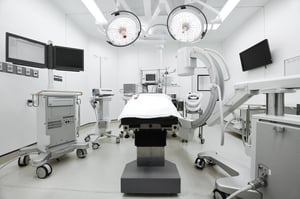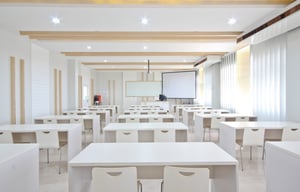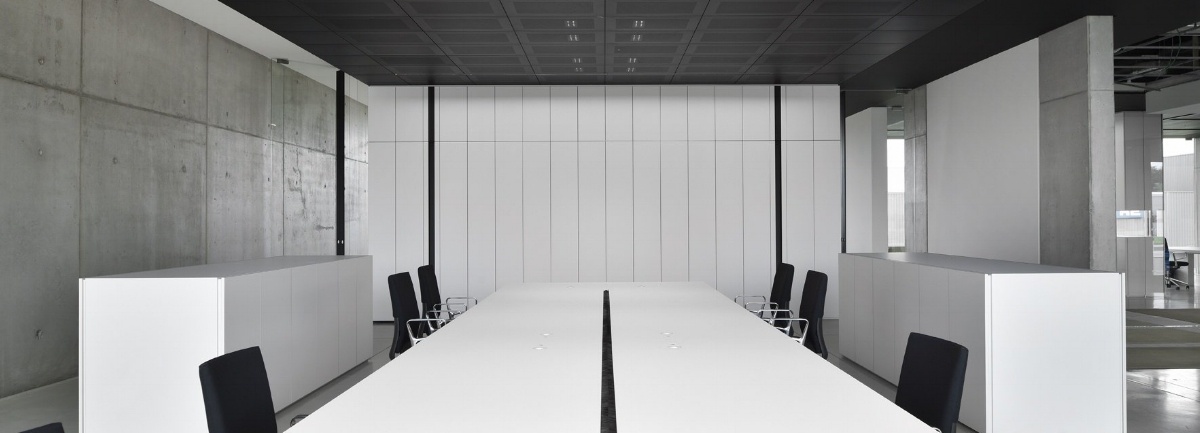Our environment is becoming increasingly busy and loud. Wherever we are, we are bombarded with noise: in the traffic, in the office, at school, even in hospitals, where peace and quiet are essential, being such important factors in a speedy recovery. The key issue with all this noise and poor acoustics is its negative impact on our health, productivity, social behaviour and education.
health and care under pressure

Increasing numbers of scientific studies show the link between noise and all kinds of physical complaints like insomnia, increased blood pressure and stress, short-term memory reduction, voice damage and heart complaints. Amazingly enough, our health sector is one of the major producers of noise and noise pollution: medical apparatus, alarm systems, pagers, loud conversations in the corridor and so on. In fact, hospitals are not the peaceful places we might expect, in which to recover and heal after an operation or illness.
Patients, but also medical staff struggle with the growing levels of noise in our health care environment. After all, as the noise level rises, so does stress and consequently also the number of medical errors.
challenging education due to poor acoustics
The second most noisy sector is education. The acoustics in traditional classrooms are so bad that resonance results in only half of what the teacher says being understood by those in the fourth row. This means that pupils sitting in the fourth row and further back need to concentrate twice as hard on what is being said. As a result, the learning process is slowed down considerably.

Furthermore, it is becoming increasingly popular to build classrooms in an open space, inspired by popular open office layouts. This modern infrastructure may look attractive and stylish, however, it is not at all practical. Once again, pupils are unable to understand the teacher, due to excessive background noise and distraction.
Pupils are not the only ones to suffer from noisy classrooms with poor acoustics. Teachers too are forced to raise their voices to be heard above the noise, increasing their stress levels and putting their voices under pressure. Scientific research demonstrates a clear link between the level of noise and the heart rate: the louder the noise, the faster the heart rate and the greater the risk of a heart attack.
deficient acoustics in the office
We witness a similar issue in the work environment with regard to open offices. Excessive background noise causes an increase in the stress hormone level and blood pressure among employees which, as previously mentioned, increases the risk of a heart attack. There is also no evidence whatsoever that open offices encourage productivity, the opposite in fact.
design with your ears in mind
It is clearly time for change. We must stop designing merely for the visual aspect, and start considering the ears and the general experience in each environment. There are different ways to create a pleasant and, above all, more healthy infrastructure, but there’s no such thing as a ’one size fits all’ solution. The opportunities depend on the space itself together with its purpose. Here is a summary of various techniques:
Deadening rooms
Sound absorbing spaces to minimise resonance. For example, this can be done with sound absorbent panels against the walls and ceiling or using noise-deadening materials in the room’s construction. Such techniques improve the acoustics.
Ambient soundscape
This technique is already being applied in busy walkways in shopping centres and airports. It involves music without a song, often inspired by nature. It has been demonstrated that the use of an ambient soundscape in an airport reduces stress among passengers and increases sales at airport retailers.
Warning: it is important that you seek professional help when designing a soundscape. Indeed, this must fit your company/brand properly, as well as being high quality in order to create the right effect.
Sound masking
The use of a tranquil murmur in the background. This can be used in open offices to ‘deaden’ surrounding discussions, so that employees can remain focused on their work. There is also evidence that this technique boosts people’s short-term memory.
Artificial windows
These are video projections of natural scenery and a sound accompaniment. On several occasions, this technique has already demonstrated that employees work better with such background noise than in a silent office. This is connected to the way our ancestors felt when hearing such peaceful natural sounds, and it creates a pleasant and safe environment.
acoustic ceiling solutions from vektron
Perceived sound levels and good acoustics in a room are determined by, on the one hand, the noise source and, on the other, the number of times noise is reverberates on the room’s surfaces. Such reverberations are often considered unpleasant. That’s why kreon has developed vektron ceiling solutions with tiles made from special materials that can absorb or deaden reverberated noise in certain parts of the room.

noise absorption
In the case of noise absorption , sound is absorbed by a surface that minimises the noise reverberation in the room. Heavily reflected noise feels unpleasant and increases the perceived noise level. kreon uses noise-absorbing materials in combination with perforations in the ceiling allowing noise to enter.
sound insulation/noise absorption
BIn traditional suspended ceilings, it is common to use modular separation walls that only extend as far as the suspended part. This results in a lack of noise insulation between adjoining rooms. By taking further measures, such as the use of sound-insulating materials, the sound is kept inside or outside the rooms. For this reason, kreon has developed acoustic tiles filled with mineral wool and plasterboard.

